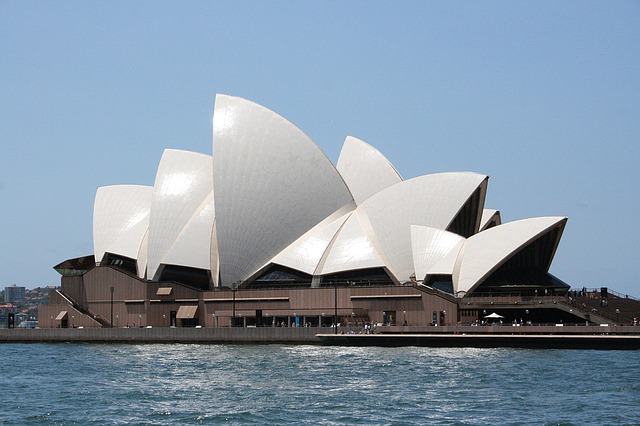Shell roof
Shell roofs are made from structural ‘skins’ where the shell material is thin in section relative to the other dimensions of the roof and undergoes relatively little deformation under load.
They are commonly used where a building interior needs to be free from intermediate walls or columns that might support a more conventional flat or pitched roof, such as; libraries, theatres, leisure centres, airport and railway terminals, and so on.
Shell roofs can be ‘flat’, but are typically curved, assuming a cylindrical, domed, paraboloid or ellipsoid shape. The curvature of shell structures benefits from the same structural efficiency as arches, which are pure compression forms with no tensile stresses. Because of their structural efficiency less material is generally needed compared to more traditional roofs. However, a restraining structure such as an edge beams is required to prevent the shell from ‘spreading’.
Shell roofs may be:
- Single shells such as the dome of the Pantheon in Rome.
- Multi-shell roofs such as Eero Saarinen’s JFK International Airport in New York.
- Reinforced with structural ribs, such as Jørn Utzon’s Sydney Opera House.
- Lattice structures, such as Norman Foster’s Great Court at the British Museum in London.
They are most commonly constructed using insitu reinforced concrete, however, other materials such as and timber and steel may be used for reinforced, lattice or composite structures.
NB the term 'shell and core' refers to a developer's base build that is subsequently fitted out before the building is occupied. For more information see: Shell and core.
[edit] Related articles on Designing Buildings Wiki
- A-frame house.
- Arches.
- Barrel vault.
- Cantilever.
- Conoid shell.
- Domestic roofs.
- Folded plate construction.
- Hyperbolic paraboloid.
- Long span roof.
- Megastructure.
- Pendentive dome.
- Portal frame.
- Purlins.
- Shell and core.
- Sydney Opera House.
- Tensile structures.
- Tension.
- Tension cable and rod connectors.
- The history of fabric structures.
- Types of dome.
- Types of roof.
- Vault.
[edit] External references
- ‘Building Construction Handbook’ (6th ed.), CHUDLEY, R., GREENO, R., Butterworth-Heinemann (2007)
Featured articles and news
Moisture, fire safety and emerging trends in living walls
How wet is your wall?
Current policy explained and newly published consultation by the UK and Welsh Governments.
British architecture 1919–39. Book review.
Conservation of listed prefabs in Moseley.
Energy industry calls for urgent reform.
Heritage staff wellbeing at work survey.
A five minute introduction.
50th Golden anniversary ECA Edmundson apprentice award
Showcasing the very best electrotechnical and engineering services for half a century.
Welsh government consults on HRBs and reg changes
Seeking feedback on a new regulatory regime and a broad range of issues.
CIOB Client Guide (2nd edition) March 2025
Free download covering statutory dutyholder roles under the Building Safety Act and much more.
AI and automation in 3D modelling and spatial design
Can almost half of design development tasks be automated?
Minister quizzed, as responsibility transfers to MHCLG and BSR publishes new building control guidance.
UK environmental regulations reform 2025
Amid wider new approaches to ensure regulators and regulation support growth.
The maintenance challenge of tenements.
BSRIA Statutory Compliance Inspection Checklist
BG80/2025 now significantly updated to include requirements related to important changes in legislation.
Shortlist for the 2025 Roofscape Design Awards
Talent and innovation showcase announcement from the trussed rafter industry.
























